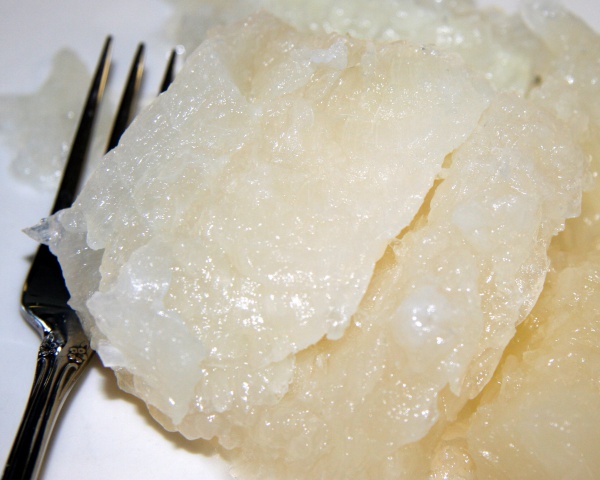Facts About Lutefisk
Lutefisk is a cherished traditional dish in several Nordic countries, especially popular during Christmas festivities. Made from aged stockfish or dried and salted cod, it undergoes a distinctive pickling process in lye, resulting in a unique gelatinous texture once rehydrated. This dish has its origins in the long winter months when preserved fish was an essential source of protein in regions with rich fishing traditions.
To prepare lutefisk, the fish is soaked in cold water and lye for several days. Following this, it undergoes additional soaking to reduce its pH content and achieve its characteristic jelly-like consistency. Cooking lutefisk is a delicate process, as it can easily disintegrate. It can be steamed, baked, boiled, or even microwaved.
Traditionally, lutefisk is served with boiled potatoes, green peas, melted butter, and bacon. In the United States, variations include side dishes like pea stew, lefse (a type of soft flatbread), gravy, and mashed rutabaga. The taste of lutefisk is mild, often enhanced with a white sauce spiced with pepper or other seasonings.
In recent years, lutefisk has experienced a resurgence in popularity in Norway. Scandinavian Americans also consume a significant amount, particularly during the Christmas season. Various festivals and events celebrate lutefisk, with some regions even claiming the title of "lutefisk capital." The dish is steeped in folklore, with tales of Viking origins and other mythical stories adding to its allure.
The name "lutefisk" varies across languages: it's "lutefisk" in Norwegian, "lutfisk" in Swedish, and "lipeäkala" in Finnish. Despite these differences, the popularity of lutefisk remains strong in Scandinavian communities worldwide. Special events and gatherings dedicated to this unique dish continue to bring people together in celebration of their cultural heritage.

 Norway
Norway